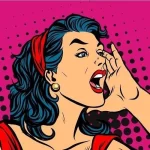The hustle and bustle of Christmas can often feel a little overwhelming. Presents to be bought, projects to be finished, people to visit… To be honest at some point it can feel like a bit too much. To make matters worse, once we get through this we can all be a bit harsh on ourselves in January by setting very high resolutions and goals. That’s why in January my favourite thing to do is to curl up and read a good book. It is a way to escape the pressure of ‘a new year, a new you’ nonsense that is everywhere in social media and telly and it will also help you relax after Christmas – that’s a win-win in my book! Here are some of my favourites and they will all make you see the world in a different way, which is the real beauty of science!
For those who dream of a fairer world: Angela Saini – Inferior

Have you ever wondered how different men and women really are? This book delves into the nitty gritty of how science has gotten women wrong. Maybe that sounds a bit scary? It isn’t, I promise. I’ve been lucky enough to have met Angela Saini, and she is not only an incredible person but also a fantastic writer. She read over 900 scientific articles and books as well as interviewing over 100 people whilst writing this book, but it isn’t intimidating or overwhelming to read. People like to argue that men and women are very different, but this book will help you realise that we are much more alike than you think and that some scientists need to do a much better job at studying both men and women!
For the incurably curious: Laurie Winkless – Science in the City

Cities are pretty incredible things. A very small area that can accommodate thousands to millions of people rushing about every day. Buses need to move people around, people need to work/live in buildings, electricity needs to power all of the computers underlying shopping tills, waste transfer pipes need to remove sewage…. But how does this all work? What is the science underpinning all of these processes? Laurie Winkless is an Irish physicist who asked all these questions and more to build up an incredible picture of the science of cities. Something that I love about Laurie (having also met her and spent a brilliant afternoon in London wandering around the Victoria and Albert Museum which we highly recommend!), is that her enthusiasm for science shines through, both in real life and in this book. You can’t help but feel excited by the energy in her words, and I promise you will never see a city in the same way again after reading it!
For those who dream of stars: A Galaxy of Her Own by Libby Jackson

Humans have always been obsessed by space and the great beyond. What is out there and how can we tell? Ireland has quite a few famous women astronomers and astrophysicists such as Agnes Mary Clerke and Mary Ward, as well as more recently Norah Patten, Susan McKenna-Lawlor and Niamh Shaw. In fact, space science in general has quite a few women who have incredible stories. Libby Jackson is currently Human Spaceflight and Microgravity Programme Manager for the UK Space Agency and in this book she explores fifty such stories of amazing scientists and engineers in space exploration. One of my personal favourites is Margaret Hamilton who was NASA’s first software engineer, writing most of the code for the Apollo Space Mission which would be the first space mission to land anyone on the moon. There are 49 other incredible people for you to discover in Libby’s book.
For bonus points, here’s my favourite picture of Margaret Hamilton..

For those who dream of discovery: The Thrilling Adventures of Lovelace and Babbage: The (Mostly) True Story of the First Computer by Sydney Padua

This is technically a graphic novel and it is a brilliant introduction to the incredible Ada Lovelace. She is widely accepted to be the first computer programmer, and she wrote the code for the analytical engine which was a precursor to the computer. This novel tells her amazing story which is set in the 1800s. Ada was the only legitimate child of the poet Lord Byron, and she was fascinated by mathematics from a very early age. The book covers her childhood and her meeting Charles Babbage (the inventor who made the analytical engine) and their work together. However, Sydney Padua doesn’t just cover the real-life story. She goes a step further and imagines what Ada and Charles Babbage might have gotten up to in alternate realities as superheroes! I first bought this for my Kindle and when I saw how beautiful Sydney’s drawings were, I had to buy it in hardback. It is a seriously fun book that tells a fascinating story.
January is also the month of the BT Young Scientist and Technology Exhibition, so if you get the chance to go, I highly recommend it – I competed it in when I was in secondary school and had an absolute ball. It runs from 10-13th January in the RDS in Dublin and there’s lots of interesting talks and exhibitions on. Most excitingly of all, there are over 450 student projects on display – these young scientists have worked incredibly hard on their projects and it is amazing to see what they can achieve.


